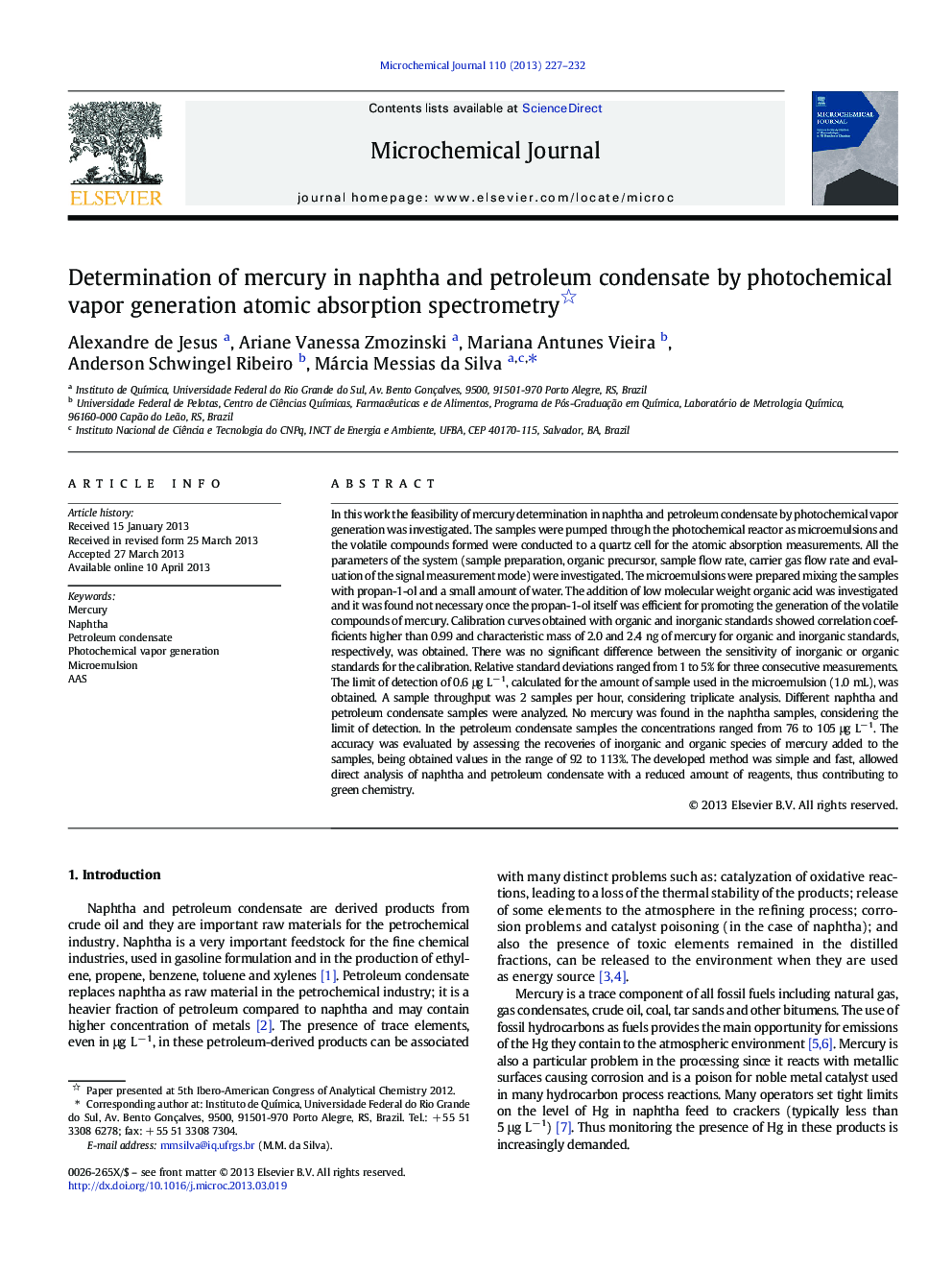| Article ID | Journal | Published Year | Pages | File Type |
|---|---|---|---|---|
| 7643677 | Microchemical Journal | 2013 | 6 Pages |
Abstract
In this work the feasibility of mercury determination in naphtha and petroleum condensate by photochemical vapor generation was investigated. The samples were pumped through the photochemical reactor as microemulsions and the volatile compounds formed were conducted to a quartz cell for the atomic absorption measurements. All the parameters of the system (sample preparation, organic precursor, sample flow rate, carrier gas flow rate and evaluation of the signal measurement mode) were investigated. The microemulsions were prepared mixing the samples with propan-1-ol and a small amount of water. The addition of low molecular weight organic acid was investigated and it was found not necessary once the propan-1-ol itself was efficient for promoting the generation of the volatile compounds of mercury. Calibration curves obtained with organic and inorganic standards showed correlation coefficients higher than 0.99 and characteristic mass of 2.0 and 2.4 ng of mercury for organic and inorganic standards, respectively, was obtained. There was no significant difference between the sensitivity of inorganic or organic standards for the calibration. Relative standard deviations ranged from 1 to 5% for three consecutive measurements. The limit of detection of 0.6 μg Lâ 1, calculated for the amount of sample used in the microemulsion (1.0 mL), was obtained. A sample throughput was 2 samples per hour, considering triplicate analysis. Different naphtha and petroleum condensate samples were analyzed. No mercury was found in the naphtha samples, considering the limit of detection. In the petroleum condensate samples the concentrations ranged from 76 to 105 μg Lâ 1. The accuracy was evaluated by assessing the recoveries of inorganic and organic species of mercury added to the samples, being obtained values in the range of 92 to 113%. The developed method was simple and fast, allowed direct analysis of naphtha and petroleum condensate with a reduced amount of reagents, thus contributing to green chemistry.
Related Topics
Physical Sciences and Engineering
Chemistry
Analytical Chemistry
Authors
Alexandre de Jesus, Ariane Vanessa Zmozinski, Mariana Antunes Vieira, Anderson Schwingel Ribeiro, Márcia Messias da Silva,
